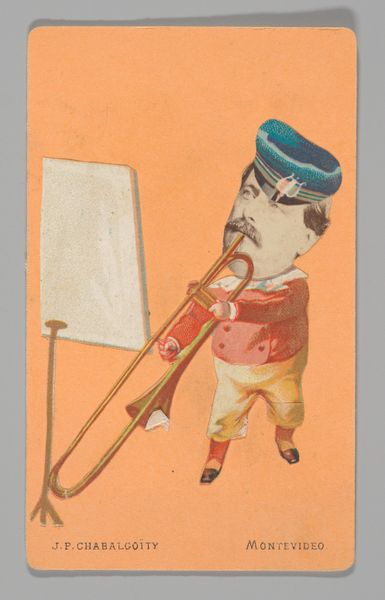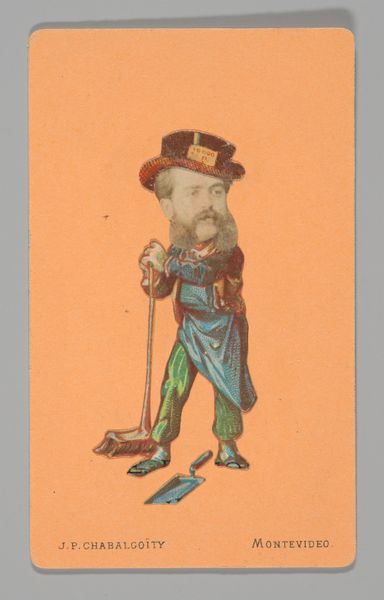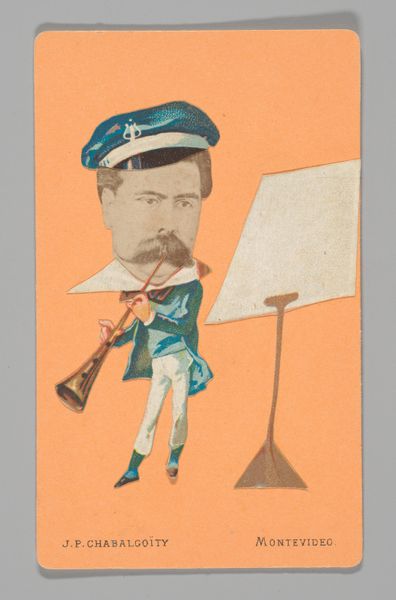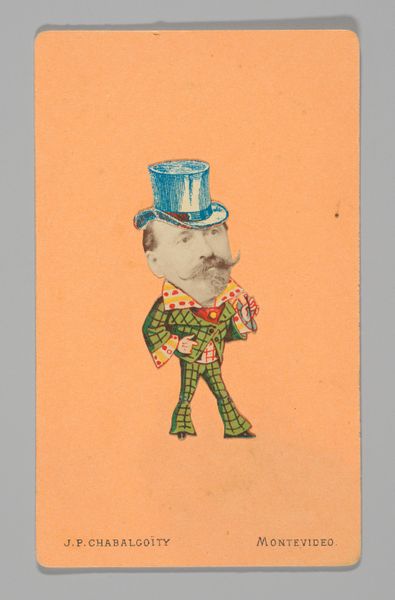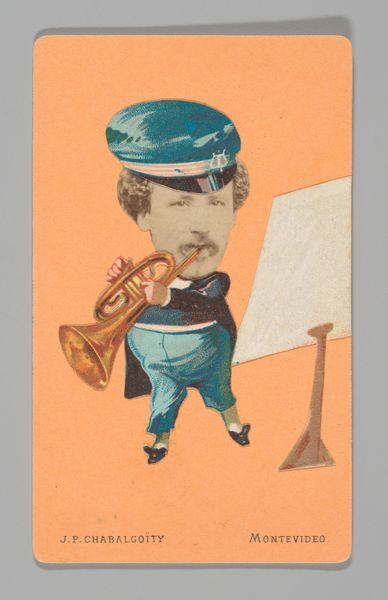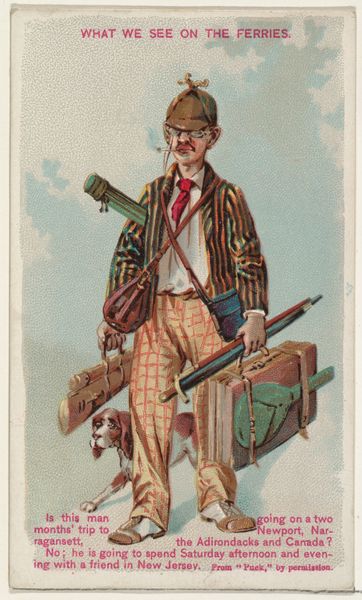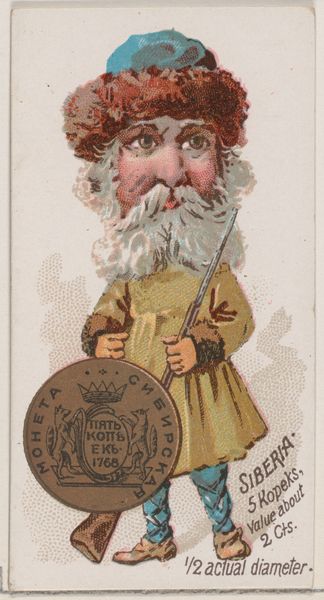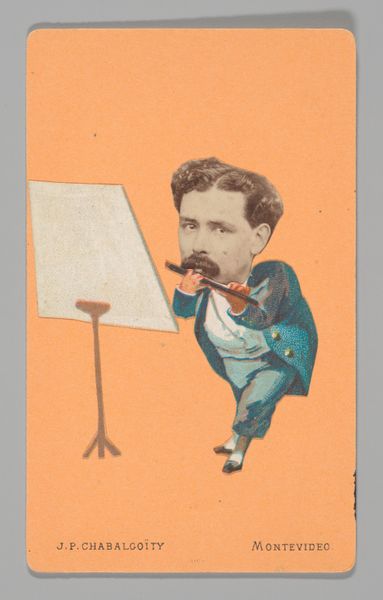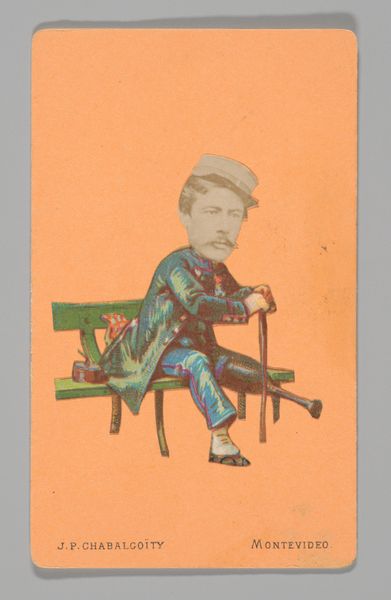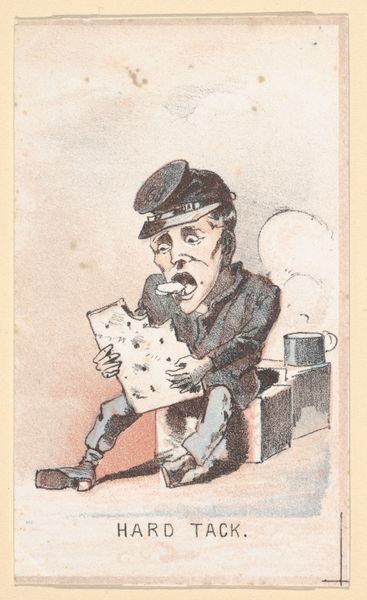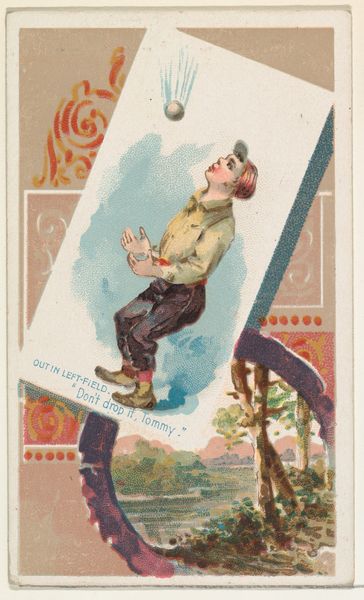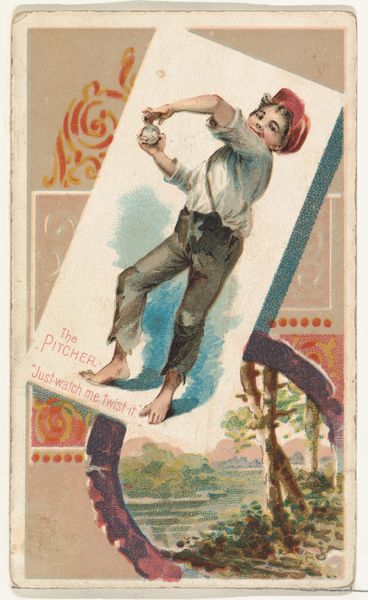![[Photo Collage: Musical Conductor] by Juan Pedro Chabalgoity](/_next/image?url=https%3A%2F%2Fd2w8kbdekdi1gv.cloudfront.net%2FeyJidWNrZXQiOiAiYXJ0ZXJhLWltYWdlcy1idWNrZXQiLCAia2V5IjogImFydHdvcmtzLzRlNmEyMWE0LTEwNzYtNGRkMS1hMjgyLTNjOGIyZGFlMWU2Zi80ZTZhMjFhNC0xMDc2LTRkZDEtYTI4Mi0zYzhiMmRhZTFlNmZfZnVsbC5qcGciLCAiZWRpdHMiOiB7InJlc2l6ZSI6IHsid2lkdGgiOiAxOTIwLCAiaGVpZ2h0IjogMTkyMCwgImZpdCI6ICJpbnNpZGUifX19&w=3840&q=75)
[Photo Collage: Musical Conductor] 1870 - 1880
0:00
0:00
print, photography
#
portrait
# print
#
photography
#
men
Dimensions: Mount: 10.5 x 6.3 cm
Copyright: Public Domain
Curator: At first glance, it's playful but the composition feels awkward somehow. A tiny body topped with an oversized, stern face. Editor: This is "[Photo Collage: Musical Conductor]" by Juan Pedro Chabalgoity, dating from somewhere between 1870 and 1880. It's a print, incorporating photography, currently held at the Metropolitan Museum of Art. The charm lies in how Chabalgoity embraces collage – quite literally assembling an image. What processes would have been involved to achieve this effect? What choices determined the final materiality? Curator: It seems so…self-aware. That incongruity is definitely part of its appeal. Think of how photographic portraiture was becoming increasingly accessible, but still retained an aura of authority. By combining it with this almost cartoonish body, is Chabalgoity critiquing the seriousness we typically project onto such images? The uniform is very purposefully chosen as well. It holds symbolic value for civic and patriotic themes during the rise of Nationalism. Editor: Precisely. And let's consider the format – most likely a carte de visite or a cabinet card, affordable and collectible. To juxtapose the face of authority and leadership on this small mass produced and traded card seems provocative to me, even challenging ideas about the social mobility that photography was enabling, no? We’re looking at very deliberate acts of cutting, pasting, and reproducing this image, so I would wonder at its impact on viewership at the time of production. Curator: I agree, that's a fantastic point. This smallness almost democratizes the image, rendering it less intimidating. Even the awkwardness plays into it – undermining any potential for stuffiness. The image reads less like a monument, more like a mischievous caricature of power. The face of the subject looks quite intimidating in contrast to this childish playful form, perhaps symbolizing authority with playful yet authoritarian tones. Editor: Exactly! Its composite nature – the fact that it's made of tangible bits and pieces and materials assembled– that’s key. It reveals its constructedness, pulling back the curtain on image-making itself. In contrast, nowadays, digitally constructed pictures are seamless and pervasive; we take them for granted. In that case, does it reveal even more in modern viewership about what we understand as "authenticity" when looking at a photograph? Curator: So, in our modern age of seamless images, perhaps Chabalgoity's creation reminds us that all images, no matter how "real," are inherently constructions, imbued with symbols and cultural values? Editor: I’d say so. And it reminds us to consider the hand, the labor, the choices in every constructed reality we encounter, from the 1870s to now.
Comments
No comments
Be the first to comment and join the conversation on the ultimate creative platform.
